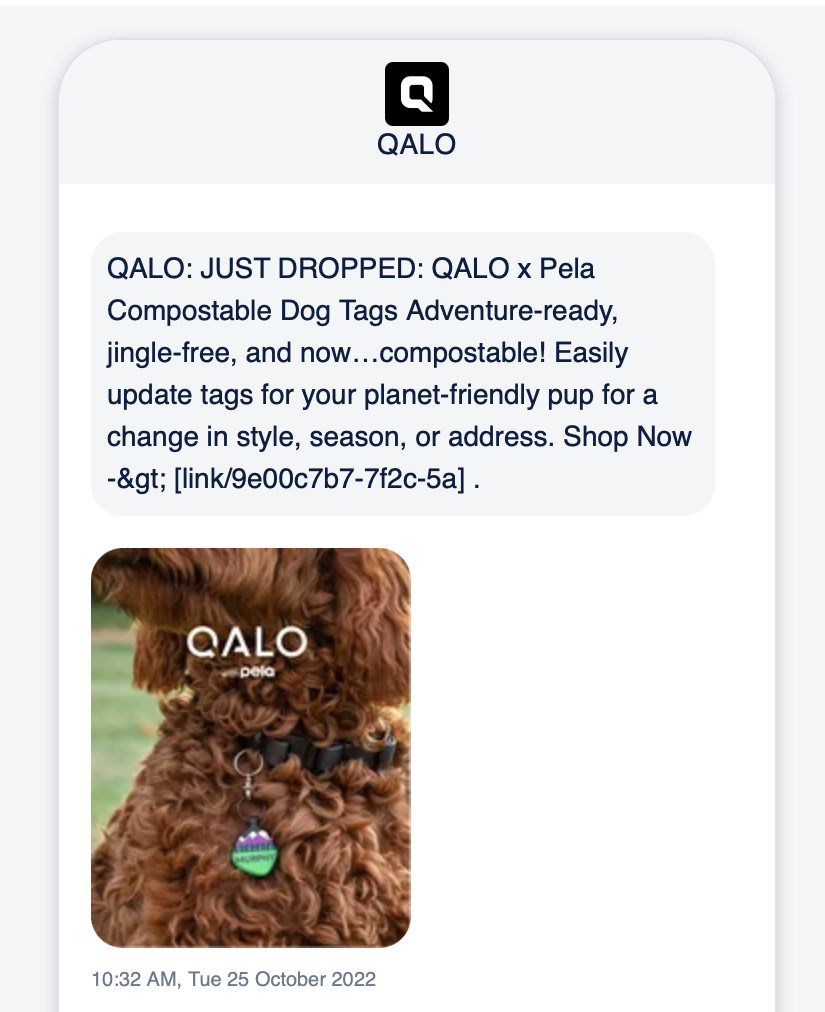A whopping 91 percent of Americans keep their mobile devices within arm’s reach at all times.
If you want to get your customer’s attention, you have to meet them where they are. These days, that’s in their texts.
Short message service (SMS) marketing is a marketing strategy that involves sending your customers news, updates, and promotional offers via text messages. It’s an easy and effective way to directly communicate with your customers,
According to SimpleTexting’s 2022’s Texting and SMS marketing survey, 27 percent more businesses are engaging in text message marketing now than compared to 2021. The survey also discovered that:
- 76.6 percent of respondents engage with text more than any other phone activity
- 53 percent of consumers check their text messages at least 11 times per day
- 51.2 percent of respondents reply to a text within 1-2 minutes
SMS marketing is here to stay. But it’s also relatively new, and much like all new marketing avenues, businesses will need to learn the do’s and don’ts by trial and error. To help you learn from the successes and setbacks of other businesses owners and marketers, here are 14 SMS marketing best practices:
1. Develop a strategy
Before you start text messaging customers, nail down a foundational SMS marketing strategy. Like all marketing efforts, SMS campaigns require clear messaging and SMART goals. To start developing your strategy, follow these five simple steps:
- Understand SMS marketing compliance requirements: Before you plan your SMS marketing campaigns, you need to know the rules around opting in and out, state and federal “quiet hours,” and what you need to tell your SMS subscribers when they sign up. Here’s an SMS compliance guide to help get you started.
- Select an SMS marketing software: There’s no shortage of SMS marketing software available today, and they all have their own pros and cons. Some seamlessly integrate with your existing email marketing stack or other marketing channels. Others are niche-specific. Do your research to determine which SMS marketing software will work best for your business. Peer review sites like G2 are a great place to start.
- Establish your foundation: Any successful SMS campaign starts by identifying your goals and milestones, what your offers will be, who your target audience is, and why they should care about your message. Then, create sign-up, welcome, auto-response, and abandoned cart messages that reflect these goals. For inspiration, here are some of the top from leading brands.
- Start A/B testing: Once your software is integrated with your email service provider and your platform, and your messages are written and personalized, test them out! A/B testing will help you identify which segments of your customers respond to what and when. The more you learn, the more effective your SMS campaign can be!
- Develop new strategies: Once your SMS marketing initiatives are underway, it’s time to build on what’s working—and discontinue what isn’t. Test new messaging, tones, personalization, incentives, and more customers to grow your SMS list. Refine and revise continuously to improve the effectiveness of your text marketing campaigns.
2. Make signing up simple
The more opportunities customers have to sign up, and the fewer steps it takes, the better. Make signing up seamless across all subscriber devices, and possible on any marketing channel you use. Think about how your social media and email channels can help you win more sign-ups. For example, many leading brands today use swipe-up ads or stories on Instagram pointing to a dedicated SMS landing page, or feature posts with text-to-join language. For extra encouragement, include special offers or incentives for opting in, like reward points, discounts, or behind-the-scenes access. No matter where you promote your SMS program, be sure to keep your messaging consistent and on brand.
3. Get consent
The Federal Communications Commission (FCC) limits SMS marketing to people who intentionally opt-in to receive messages. You have to gain explicit consent from subscribers before you can start marketing to them. Getting consent via email doesn’t mean that a subscriber is agreeing to SMS marketing as well.
To gain consent, include a phone number field in your popup forms, subscription boxes, newsletter fields, and wherever else customers can opt-in to receive messages. Also, let customers know what kinds of messages they should expect from your business. For example, you can say something like, “Subscribe now and receive a special promo code for 25% off your next order!” or “Subscribe now to be the first to know about our new arrivals.” Then, include a phone number field and a compelling call-to-action button.
4. Make opting out easy
You must also offer a simple, direct way for subscribers to opt-out of future messages.
No matter how compelling your messages are, chances are some subscribers won’t wish to remain in your program forever. When they’re ready to say goodbye to your brand, it’s best to let them go with grace. This starts with making it easy for customers to unsubscribe. Every SMS text message you send must include a link customers can go to if they want to opt-out. Or, let them know they can respond with “STOP” to instantly unsubscribe, like Office Depot does here.

Using some of your limited message real estate to let SMS subscribers know they can unsubscribe can sound daunting. After all, the “unsubscribe” button in emails is usually buried in the footnote of the message in a microscopic font. Instead of seeing unsubscribes as a negative, think of them as an opportunity. You can learn more about which customers are unsubscribing, and re-tool your messaging or marketing efforts for future campaigns. Also, if customers are opening your messages and not unsubscribing, they’re likely still interested in your future offerings, even if they’re not engaging with your current ones.
5. Use personalization
As far as SMS best practices (or any marketing best practices) go, personalization should be top of mind. Personalization establishes and strengthens customer loyalty. Use your subscriber’s first name when sending messages when you can. If you’re location-bound (e.g., have a brick-and-mortar business), only send messages relevant to the recipient.
If Eduardo lives in Manhattan, information about specials in Seattle’s Old Navy isn’t relevant to him. However, if Eduardo regularly buys his jeans at Old Navy, he may be interested in learning that the Old Navy store three blocks away is selling them for 20 percent off.
6. Identify yourself
Eduardo might be excited to hear that jeans are 20 percent off. He just ripped a pair yesterday! However, Eduardo won’t know where to find his next great pair if Old Navy fails to identify themselves in their SMS message.
Other marketing channels don’t have to worry about up-front brand visibility in their marketing communications. Social media platforms have thumbnails and profiles; email campaigns have a subject line and “from” address. SMS marketing campaigns aren’t so transparent. All customers see when they receive a text message is a random phone number.
Before you start talking about flash sales, new arrivals, or appointment reminders, let your customers know who you are, like 1-800 Contacts does here.

7. Be responsive
According to a recent Mobile Usage Report, 90 percent of all text messages are read within three minutes after a subscriber receives them. SMS is a lightning-fast communication channel—and your subscribers expect your customer service to be equally fast. If you’re sending SMS marketing messages and offer two-way messaging, you’ve got to be ready to respond to questions your customers may have in a timely manner. If you take a full day or even a couple of hours to respond, your customers might lose interest in the offer or even unsubscribe. Make sure your team is prepared and knows when messages that could lead to questions are being sent out.
If you don’t offer two-way messaging, you can send your customers a link to a landing page, FAQ section, or a customer support email or chat forum. Whatever you decide, make sure you’re responding to their messages within a reasonable time frame.
8. Be mindful of time zones
Time zone segmentation is easily one of the most vital SMS best practices to adapt. You need to know what time zone your mobile subscribers are in before you start sending them text messages.
If you send Jake an SMS message at 10 a.m. EST, but he lives in California and it wakes him up, Jake likely won’t stay a subscriber for long. If you want to make sure everyone gets your message at exactly 10 a.m in their time zone., use customer relationship management (CRM) software that can segment your customers by time zone with little manual effort. This will allow you to effectively manage communication with clients.
Learn more about the best times to send marketing SMS.
9. Deliver immediate value
SMS marketing is the perfect channel for breaking exciting news, like QALO does here.

If your customers also find the news exciting, you’ll enhance their experience with your brand and build customer loyalty.
SMS marketing is meant to inspire direct and immediate action. You’re letting your customers know about something that’s happening right now or very soon. In as little as a sentence fragment, you’re telling them what you’re offering and how they can get it.
That said, don’t underestimate a powerful call to action (CTA). After informing your customers about your BOGO sale, it’s time to encourage them to take the next steps. Include a link to your webpage displaying the sale, the address to your brick-and-mortar store, or provide the discount code they’ll need when checking out.
When your CTA involves a link or code, make sure to track their click-through rates to determine their effectiveness.
10. Offer exclusivity
Everyone wants to feel like they’ve scored a special deal.
When conducting traditional campaigns, marketers are usually encouraged to offer similar messaging and deals across all channels. One of our SMS marketing best practices involves breaking this rule.
Here’s why:
Many of the stats and statements we’ve highlighted thus far highlight how immediate and personal SMS messaging is. When a customer opts in to receive messages from your brand, they agree to give you access to the most direct way to reach them.
If you’re offering them the same promo codes or offers via text as you are over email, Instagram, and Facebook, there’s no reason for them to keep receiving SMS messages from you. Many—if not all—messages you send in your SMS campaigns should be exclusive to those on your SMS list. Providing a special offer for your SMS list is even better, like in this AVON message.

11. Speak the language of text
SMS messages usually only give you 160 characters to work with, including identifying who you are and how to unsubscribe. Your text message must be direct and may require a little shorthand. However, it still has to make sense. Have someone read your SMS messages before you send them. If they struggle to understand some of it, you’ve gone too far.
Depending on your brand, you may also have to maintain a certain level of professionalism. You wouldn’t expect to receive a luxury brand saying something like:
“2morrow @ Jane’s @ Smith Str. gr8 deal on 4ever bracelets. 20% off w/txt code 20OFF!”
Not only does this take longer to read than if they said, “Jane’s @ Smith Street – 20% off forever bracelets tomorrow w/text code 20%OFF!” It’s also inconsistent with the brand’s voice.
Speaking of consistency…
12. Be mindful of text frequency
Continuing from the above, avoid texting more or less than your subscribers expect.
Industry guidelines suggest sending 2-6 texts per month is ideal, but text frequency varies based on the reasoning for the texts. If your non-profit runs a Giving Tuesday campaign, you’ll probably send texts more frequently as the campaign draws near. If your restaurant has weekly specials, your customers may be accustomed to hearing about them at the beginning of every week. When huge company news breaks, you might break the mold and inform your subscribers immediately.
If you know you’re entering a period in which you plan to send SMS messages more frequently, (during Black Friday weekend, for example) slowly ramp up your sending frequency in the weeks before, so your subscribers won’t be surprised by an influx of messages.
13. Be consistent
Like most other marketing mediums, consistency in SMS is key.
Most marketers sending successful SMS campaigns regularly schedule their texts.
If you send an SMS text every Thursday at noon to inform your customers what specials you’ll have that weekend, they’ll expect to receive a text on Thursdays at noon about your specials. Building that type of consistency and delivering on their expectations is key to driving long-term customer loyalty.
14. Include any necessary disclaimers
These are not for the sake of text message marketing best practices—some of them are legal requirements!
To comply with your federal, law, or industry laws, you may be required to include disclaimers or legal notices, like:
- Text message and data rates may apply (although this is less common nowadays)
- A link to your privacy policy
- A link to your terms and conditions
- Instructions to unsubscribe
- Inform customers how many messages they may receive per month
Remember: your text messages will come from random phone numbers, so be mindful of what you say. Identify yourself immediately and personalize your message to keep them out of the spam folder. Include secure links that take your customers directly to where they should be going. Also, don’t ask for any transactional data, like personal or credit card information via text. You don’t want to risk acquiring an amazing customer, only to have them immediately opt out because you sent them a “sketchy” message.
Follow SMS marketing best practices to transform your business
SMS marketing offers you an incredible opportunity to always be within your customers’ reach. As a bonus, your messages have a much higher chance of being read than those sent via other channels, like email or social media. Which makes SMS the perfect sidekick to your email campaigns. By following these text message marketing best practices, your SMS marketing campaigns can transform your business.
Are you ready to participate in one of the most popular new marketing trends in the digital age? Sign up for MailCharts to discover the best SMS marketing campaigns and get inspired!



